In an increasingly complex world, the need for robust, reliable security is paramount, whether safeguarding a family home or protecting a multi-million dollar commercial asset. While rudimentary local alarms have existed for decades, modern security relies on integrated, intelligent networks known collectively as central alarm systems. These systems are the technological backbone of contemporary protection, offering far more than a simple siren—they provide comprehensive detection, immediate communication, and coordinated response capabilities.
This comprehensive guide delves into the intricate architecture, essential benefits, and cutting-edge technology behind high-quality central alarm systems. We will explore how these integrated platforms function, the vital role of central alarm monitoring, and the critical factors you must consider when selecting a solution tailored to your unique security profile. Investing in a security solution today means investing in peace of mind tomorrow, and understanding these sophisticated systems is the first step toward achieving unparalleled safety.
Contents
- 1 Understanding the Core Concept: What Defines a Central Alarm System?
- 2 The Pillars of Protection: Types of Central Alarm Systems
- 3 The Critical Role of Central Alarm Monitoring
- 4 Advanced Technology Driving Modern Central Alarm Systems
- 5 Beyond Intrusion: Comprehensive Security Integration
- 6 Evaluating and Choosing the Right Central Alarm Systems Provider
- 7 Maximizing Effectiveness: Best Practices for System Owners
- 8 Conclusion: Investing in Peace of Mind
Understanding the Core Concept: What Defines a Central Alarm System?
A central alarm system is best defined as a unified network of electronic components designed to detect unauthorized entry, environmental hazards, or other security breaches, and immediately relay that information to a designated central authority or monitoring center. Unlike stand-alone alarms that merely produce a local sound, these systems are inherently interconnected and rely on sophisticated communication pathways.
At its heart, a central system is characterized by its capacity for centralization. All sensors, detectors, cameras, and access control points feed data back to a main control panel, which acts as the brain. This panel then manages the data flow, interprets the threat level, and initiates the necessary response protocol, often involving professional central alarm monitoring. This integrated approach ensures that no single point of failure compromises the entire security infrastructure.
The Shift from Local Alarms to Integrated Centers
Historically, alarms were simple devices: a door contact wired to a bell. If the door opened, the bell rang. The effectiveness of this system relied entirely on a neighbor or passerby hearing the noise and choosing to intervene or call the police. This model was reactive and limited.
Modern central alarm systems, by contrast, are proactive and redundant. The shift began with the introduction of dedicated monitoring stations that could receive signals via telephone lines. Today, communication relies heavily on cellular networks (GSM/LTE) and high-speed internet (IP), ensuring that even if power or phone lines are cut, the system remains connected. This evolution means that detection is merely the start; reliable communication and professional intervention are the primary deliverables of contemporary security.
Key Components of a Centralized Security Network
A robust central system is a carefully orchestrated collection of specialized hardware working in concert. While the specifics vary depending on whether the system is residential or commercial, the foundational components remain consistent:
- The Control Panel/Hub: This is the intelligent core. It processes inputs from all sensors, manages user access (codes, key fobs), communicates with the monitoring center, and controls system status (armed/disarmed). Modern hubs often feature touchscreens and integrated smart home capabilities.
- Sensors and Detectors: These are the eyes and ears of the system. They include magnetic door/window contacts, passive infrared (PIR) motion detectors, glass-break sensors, and specialized vibration or acoustic sensors.
- Communication Module: This ensures connectivity. It utilizes cellular radios (crucial for redundancy) and internet connections to transmit alarm signals securely and rapidly to the central alarm monitoring station.
- Input/Output Devices: Keypads, remote fobs, and mobile applications used by authorized personnel to interact with the system.
- Peripherals: Sirens (both internal and external), strobe lights, and integrated video cameras (CCTV) which provide visual verification of alarms.

The Pillars of Protection: Types of Central Alarm Systems
The scope and complexity of central alarm systems are highly adaptable, allowing providers to tailor solutions for environments ranging from small apartments to vast corporate campuses. The primary distinction often lies in the required scalability, regulatory compliance, and the level of integration necessary with other building management systems.
Residential Central Alarm Systems
Residential systems prioritize user-friendliness, aesthetic integration, and swift emergency response. These typically employ wireless technology extensively, minimizing disruption during installation and allowing for easy expansion.
The focus here is comprehensive life safety alongside intrusion detection. Advanced residential central alarm systems often include features such as geofencing (automatically arming/disarming based on the user’s location), panic buttons, and integrated smart locks. The monitoring service is designed to handle common emergencies quickly, providing verification to minimize false dispatches while ensuring rapid police, fire, or medical assistance when a genuine threat is detected.
Commercial and Industrial Central Alarm Systems
Security requirements for businesses are far more stringent due to higher asset value, regulatory demands (e.g., insurance requirements), and complex operational environments. Commercial central alarm systems must be highly scalable, supporting hundreds of zones, multiple partitions, and detailed user hierarchies.
Key features specific to commercial applications include:
* Access Control Integration: Combining intrusion detection with key card readers, biometric scanners, and time-and-attendance logging.
* High-Security Sensors: Utilizing seismic sensors for vaults, pressure mats, and advanced perimeter detection systems.
* Compliance Auditing: Providing detailed logs and reports necessary for regulatory bodies and insurance purposes.
* Duress Signaling: Silent alarms activated under threat, immediately alerting the central alarm monitoring center without alerting intruders.
Hybrid and Wireless Solutions
The industry trend leans heavily toward hybrid solutions, combining the reliability of hardwired sensors (for high-traffic areas or long-term installations) with the flexibility of wireless components. Wireless technology simplifies installation and offers redundancy, as sensors can be placed in locations where running wires would be impractical. Modern wireless signals are encrypted and feature multi-year battery life, overcoming earlier concerns about reliability and maintenance.
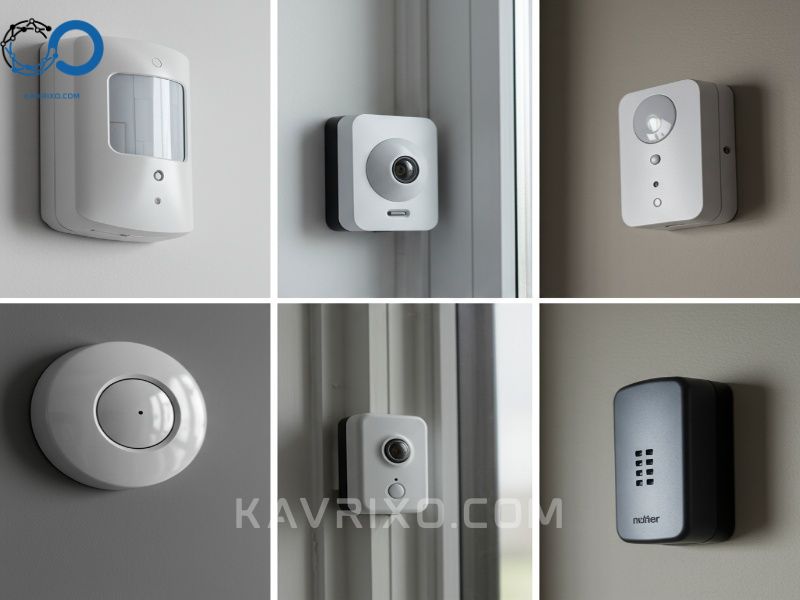
The Critical Role of Central Alarm Monitoring
Without professional monitoring, a sophisticated alarm system is merely a local noise generator. Central alarm monitoring is the crucial link that transforms a detection event into an effective response. It represents a 24/7 commitment from trained professionals who are ready to act the moment an alert is triggered, regardless of the time or day.
How Professional Monitoring Centers Operate 24/7
A monitoring center, often referred to as a Central Station, is a high-tech facility designed with multiple layers of redundancy—backup power, redundant communication lines, and geographically separated data centers—to ensure continuous operation.
When an alarm signal is received from one of the central alarm systems they service, the protocol initiates instantly:
- Signal Reception and Verification: The signal is received, analyzed, and categorized (e.g., intrusion, fire, medical). If the system supports video or audio verification, the operator attempts to confirm the nature of the threat immediately.
- Contacting the Premises/Keyholders: The operator attempts to contact the customer or designated keyholders according to a pre-defined call list to confirm if the alarm is false or genuine.
- Emergency Dispatch: If the threat is verified, or if contact cannot be made, the operator instantly contacts the appropriate Public Safety Answering Point (PSAP)—police, fire department, or ambulance service—providing crucial details about the location and nature of the emergency.
This entire process is often measured in seconds, and this speed is the primary value proposition of professional central alarm monitoring.
Communication Protocols: IP, Cellular, and Dual-Path Redundancy
The reliability of a central alarm system is directly tied to its communication method. Older systems relied solely on traditional landlines (POTS), which were vulnerable to line cuts. Modern security demands robust redundancy:
- Cellular (GSM/LTE): This is the gold standard for reliable communication. Since it does not rely on local infrastructure (like cables), it is virtually immune to line cutting or internet outages. Many modern central alarm systems utilize dedicated cellular modules.
- Internet Protocol (IP): Provides fast communication, often used for daily reporting, remote access, and video streaming. However, it is dependent on the local internet service.
- Dual-Path Communication: The most secure configuration utilizes both cellular and IP paths simultaneously. If one fails, the other immediately takes over. This redundancy guarantees that the signal will reach the central alarm monitoring center, drastically reducing the risk of a communications failure during a critical event.
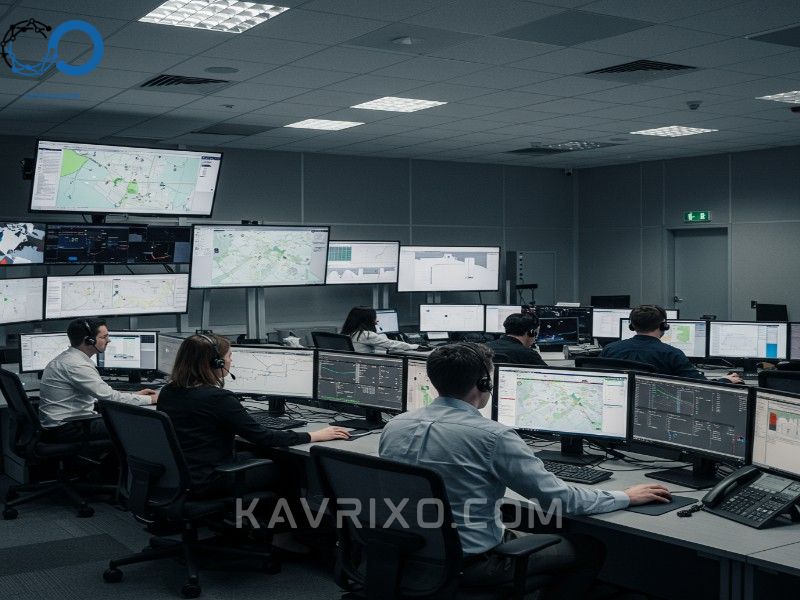
Prioritizing Emergency Response and Dispatch
Effective monitoring services work closely with local first responders. Some jurisdictions require verified alarms (video or audio confirmation) before police will dispatch. High-quality central alarm systems facilitate this verification process, allowing monitoring centers to provide the necessary proof of intrusion, which often elevates the priority level of the dispatch call. This ability to prioritize genuine emergencies saves time, reduces false alarm penalties, and ultimately enhances the protection offered by the security system.
Advanced Technology Driving Modern Central Alarm Systems
The security landscape is constantly evolving, driven by advancements in artificial intelligence (AI), the Internet of Things (IoT), and high-definition imaging. Today’s central alarm systems are intelligent networks that learn user behavior, anticipate threats, and integrate seamlessly into the smart ecosystem of a property.
Integrating IoT and Smart Home Functionality
The integration of IoT (Internet of Things) devices has transformed the utility of central alarm systems. The security panel is no longer just an alarm interface; it’s a smart hub controlling lighting, thermostats, and automated locks.
This integration offers both convenience and enhanced security:
* Remote Management: Users can arm/disarm the system, check sensor status, and view live video feeds from anywhere via mobile apps.
* Automation Scenarios: Linking security events to home functions (e.g., if the system is armed, the smart thermostat adjusts; if a smoke alarm triggers, all smart lights turn on and doors unlock).
* Voice Control: Integration with platforms like Alexa or Google Assistant allows for hands-free system management, provided robust authentication protocols are in place to prevent unauthorized voice commands.
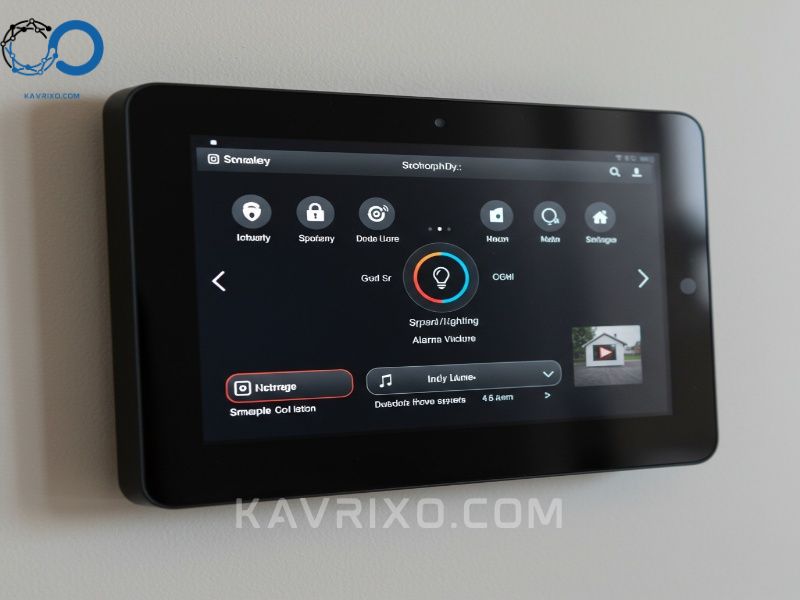
Video Verification and AI-Powered Threat Detection
One of the most significant technological leaps is the sophisticated use of video. Video verification is critical for ensuring efficient police response, but modern systems go further using AI:
- Intelligent Motion Detection: Cameras can distinguish between benign movement (a pet, swaying tree branches) and genuine threats (a human figure). This dramatically reduces nuisance alerts and false alarms that plague traditional motion sensors.
- Facial and Vehicle Recognition: Advanced commercial central alarm systems can identify known employees or authorized vehicles, triggering alerts only when unknown individuals or vehicles enter restricted areas.
- Perimeter Analytics: Using thermal and high-definition cameras, the system can establish virtual boundaries and immediately flag abnormal behavior, such as loitering or scaling a fence, often before a physical breach even occurs.
Cybersecurity Concerns in Connected Alarm Systems
As central alarm systems become more reliant on IP networks and cloud services, cybersecurity becomes a primary concern. A professional system provider must employ rigorous security measures to protect the integrity of the network and the privacy of the data. This includes:
- End-to-End Encryption: Ensuring all communications between sensors, the panel, the cloud, and the central alarm monitoring center are encrypted.
- Secure Authentication: Utilizing multi-factor authentication (MFA) for remote access and strong password policies.
- Regular Software Updates: Patching vulnerabilities quickly is essential, as even the most secure hardware can be compromised by outdated software.
Beyond Intrusion: Comprehensive Security Integration
The term “alarm system” often evokes images of burglary detection, but truly comprehensive central alarm systems offer protection against a much wider array of threats, integrating life safety and environmental monitoring into a single, cohesive platform.
Fire, Smoke, and Carbon Monoxide Detection
Life safety is arguably the most critical function of a monitored system. Dedicated fire and smoke detectors integrated into the central alarm systems ensure that alerts are transmitted immediately to the monitoring center, regardless of whether residents are home or not. Unlike standard residential smoke alarms, monitored detectors trigger a specific fire response protocol, resulting in faster fire department dispatch.
Similarly, monitored carbon monoxide (CO) detectors provide protection against this invisible, odorless killer. If CO levels spike, the system not only sounds a local alarm but also sends a priority signal to the monitoring center, initiating emergency response procedures immediately.
Environmental Hazard Monitoring (Floods, Freezes)
For both residential and commercial properties, damage from water leaks, burst pipes, and extreme temperature fluctuations can be financially devastating. Modern central alarm systems incorporate specialized environmental sensors:
- Water/Flood Sensors: Placed near water heaters, sump pumps, or basements, these sensors alert the system to the presence of moisture, allowing property owners or monitoring staff to intervene before extensive damage occurs.
- Low-Temperature Sensors (Freeze Protection): Essential in colder climates, these sensors monitor ambient temperature and alert keyholders if the temperature drops to a dangerous level, indicating a potential furnace failure that could lead to frozen and burst pipes.
Access Control and Perimeter Security Integration
In large commercial settings, the central alarm systems often merge seamlessly with sophisticated access control measures. This integration allows the security manager to:
- Disarm by Access: Use a single credential (key card or biometric scan) to unlock a door and simultaneously disarm the specific security zone associated with that entry point.
- Auditing and Reporting: Track who entered and exited, and when, generating detailed reports essential for forensic analysis if an incident occurs.
- Managed Perimeters: Utilizing advanced exterior sensors, like beam detectors or buried cables, to establish a secure perimeter. If the perimeter is breached, the system triggers the alarm and associated CCTV cameras, providing video evidence to the central alarm monitoring center.
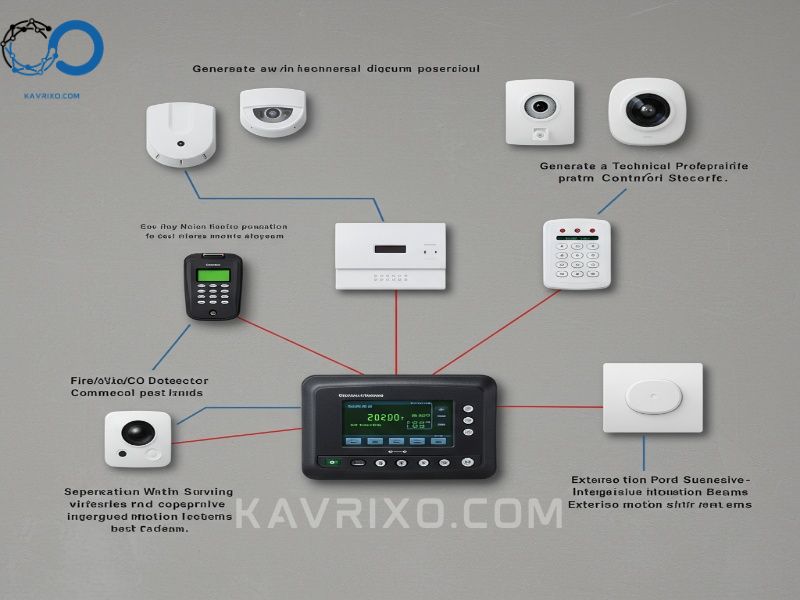
Evaluating and Choosing the Right Central Alarm Systems Provider
Selecting the right security partner is as crucial as selecting the right technology. Given the complexity and 24/7 reliance on these systems, due diligence is necessary to ensure long-term reliability and compliance.
Assessment: Risk Analysis and Customization
A top-tier provider of central alarm systems begins the process not with a sales pitch, but with a thorough risk assessment. They need to understand your specific vulnerabilities, daily routines, and regulatory obligations.
Key questions during this phase include:
* What are the high-value assets that need protection?
* What are the structural weaknesses of the building (e.g., skylights, ground-floor windows)?
* What level of response time is acceptable for different types of alerts?
* Are there specific insurance or regulatory compliance standards that must be met?
The best systems are customized. Avoid providers offering one-size-fits-all solutions, particularly when discussing complex commercial needs or advanced residential integration. Customization ensures optimal sensor placement and minimizes false alarms.
Understanding Service Agreements and Hidden Fees
The service agreement for central alarm monitoring is where costs and obligations are defined. It is vital to scrutinize several elements:
- Contract Length and Renewal Terms: Many providers require multi-year contracts. Understand the cancellation policy and potential early termination fees.
- Monitoring Fees vs. Equipment Fees: Be clear on whether you are leasing or purchasing the equipment. Leasing often results in lower upfront costs but higher long-term expenditure.
- Warranty and Maintenance: Does the monthly fee cover ongoing maintenance, battery replacements, and hardware warranty? Downtime due to failed components is unacceptable in a security system. Ensure the provider offers prompt, reliable technical support.
The Importance of Installation and Maintenance Quality
Even the most technologically advanced central alarm systems will fail if installed incorrectly. Professional installation guarantees that sensors are positioned optimally, wiring (if used) is concealed and protected, and the control panel is configured for maximum performance and minimum false alerts.
Furthermore, ongoing maintenance is non-negotiable. Systems, especially commercial ones, require periodic testing and calibration. High-quality security firms schedule regular check-ups to verify battery health, sensor functionality, and communication integrity with the central alarm monitoring center. This proactive approach ensures the system remains reliable over its lifespan.
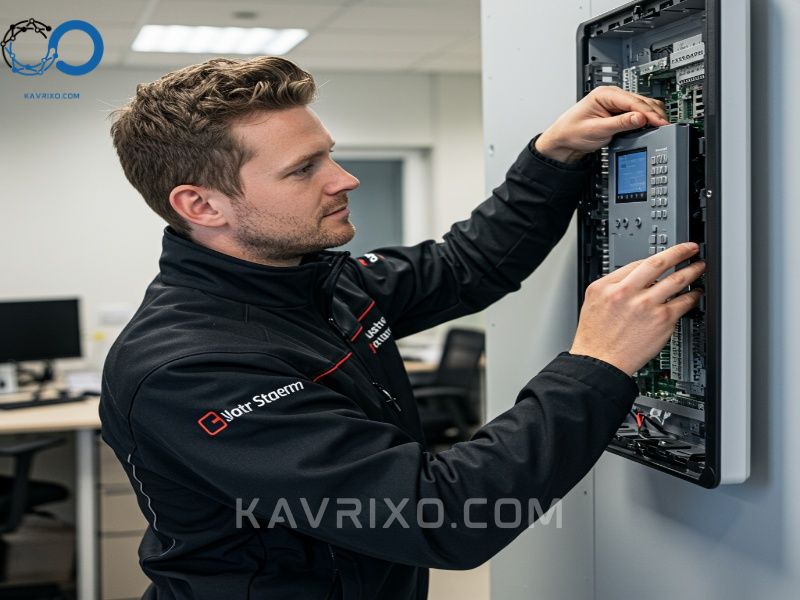
Maximizing Effectiveness: Best Practices for System Owners
Once installed, the responsibility shifts slightly to the system owner or facility manager. A security system is only as effective as the people who operate it.
Regular Testing and User Education
Users must be fully educated on how to operate the central alarm systems. This includes arming/disarming procedures, understanding different alarm zones, and knowing the emergency protocols.
Regular testing is crucial. System owners should perform weekly or monthly tests in coordination with their central alarm monitoring provider. This ensures that the communication path is clear and that all sensors are reporting correctly. Testing should also involve key personnel to ensure they know the correct procedures if contacted by the monitoring center during an actual event.
Minimizing False Alarms
False alarms are not only disruptive but can also lead to fines from local municipalities and, more importantly, can lead to complacency or delayed police response. The primary causes of false alarms are usually user error (e.g., incorrect codes, delay in exiting) or poor system design (e.g., motion detectors placed near heat vents).
System owners should work with their provider to fine-tune sensor sensitivity, utilize entry/exit delays appropriately, and strictly train all users on proper arming and disarming protocols. Modern video verification capabilities greatly assist in reducing false alarms by giving the monitoring center the necessary visual confirmation before dispatching emergency services.
Conclusion: Investing in Peace of Mind
Central alarm systems represent the pinnacle of modern security technology. They are sophisticated, integrated networks designed not just to detect a threat, but to manage and coordinate a swift, effective emergency response. From protecting high-value assets in a corporate environment to safeguarding the lives of those in a family home, these systems provide a critical layer of defense.
By utilizing redundant communication paths, leveraging cutting-edge AI for verification, and integrating seamlessly with professional central alarm monitoring services, today’s alarm systems offer a genuine investment in peace of mind. Choosing the right provider and understanding the technology behind these systems ensures that your property, and the people within it, are protected 24 hours a day, 365 days a year. The security landscape demands vigilance, and a robust central alarm system is the essential foundation of that defense.
